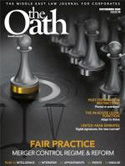Fixed fee vs. Hourly rate – Who wins?
Stephen Hibbert records his observations on legal fees and billing in the provision of legal services to large government organisations in the Middle East.
I was in private practice for 29 years, before taking up the role of General Counsel at Qatar Rail in 2012. I am entering my eight year in the Middle East – four in private practice and four with Qatar Rail. I think I am qualified to make some observations on legal fees – billing – and getting paid.
At Qatar Rail, we started in 2012 with a legal panel of five international law firms and two regional/local firms. After two years, we reduced the five internationals to three.
From any perspective, the single biggest issue for law firms generally is fees – billing – getting paid. It is not solely a ME issue, but it can be more pronounced here in that there are regional issues and complexities that sometimes law firms do not clearly understand or manage.
If the brief be: For a matter of some significance, what is the best fee arrangement to ensure that a law firm is retained on an acceptable arrangement and then gets paid on time, plus the client is happy to pay them?
The answer is simple – lump sum fees.
Over my time in the ME, I think the ratio of being retained on a lump sum basis vs. hourly rates is like 90 per cent vs. 10 per cent. Let me present the case from a client’s perspective as to why lump sum fees are so preferable, in the context of a matter of some significance.
In most ME government departments, procurement policies dictate the need for at least two proposals and quotations. Certainlytechnical, legal competency and experience are selection factors but if that scoring is relatively the same, then the fees will govern.
The Government here has great difficulty dealing with the verification of hourly rate work. It is not impossible but more often law firms do not help themselves with poor and inconsistent narrations. We commonly see bills for three people attending the same meeting with us, recording different hours and narrations. So, when bills are being assessed by our finance and compliance department, there can be pages of questions, all of which delays payment.
However, there are more important factors. In 2015, in a very global and highly competitive legal world, lump sum fee work places the incentives in the right place. For the law firm, it can manage its resources and work allocation to meet the fee target. Why is that not a good thing for the firm? Indeed, a fixed fee assignment, properly set up, should incentivize the law firm to be as efficient as possible.
By ‘properly set up’, I mean that attention needs to be paid to:
· Scope– Clarity in what are the deliverables
· Timing– The most critical issue in my view. Most law firms can price an assignment of up to say 3-4 months relatively easily. If the matter is to go beyond that – and many do – risks will arise.
· Risk– Fixed fee work needs to be driven by the law firm. Firms will come unstuck if they sit and wait for a client to respond. With a fixed fee arrangement comes the need for pro-active leadership from the firm.
I also recommend disclosing to the client the key elements that make up your lump sum. A firm should not be reluctant to openly discuss with a client its proposed work plan and any assumptions – both as to costs and time. This is especially true if it’s a large number.
I am the first to admit that I have taken the benefit of hourly rate work in my professional life. But for law firms seeking to work profitably in the ME, it is my submission that it can only be achieved on a sustainable basis via a fixed fee approach.
























































































































